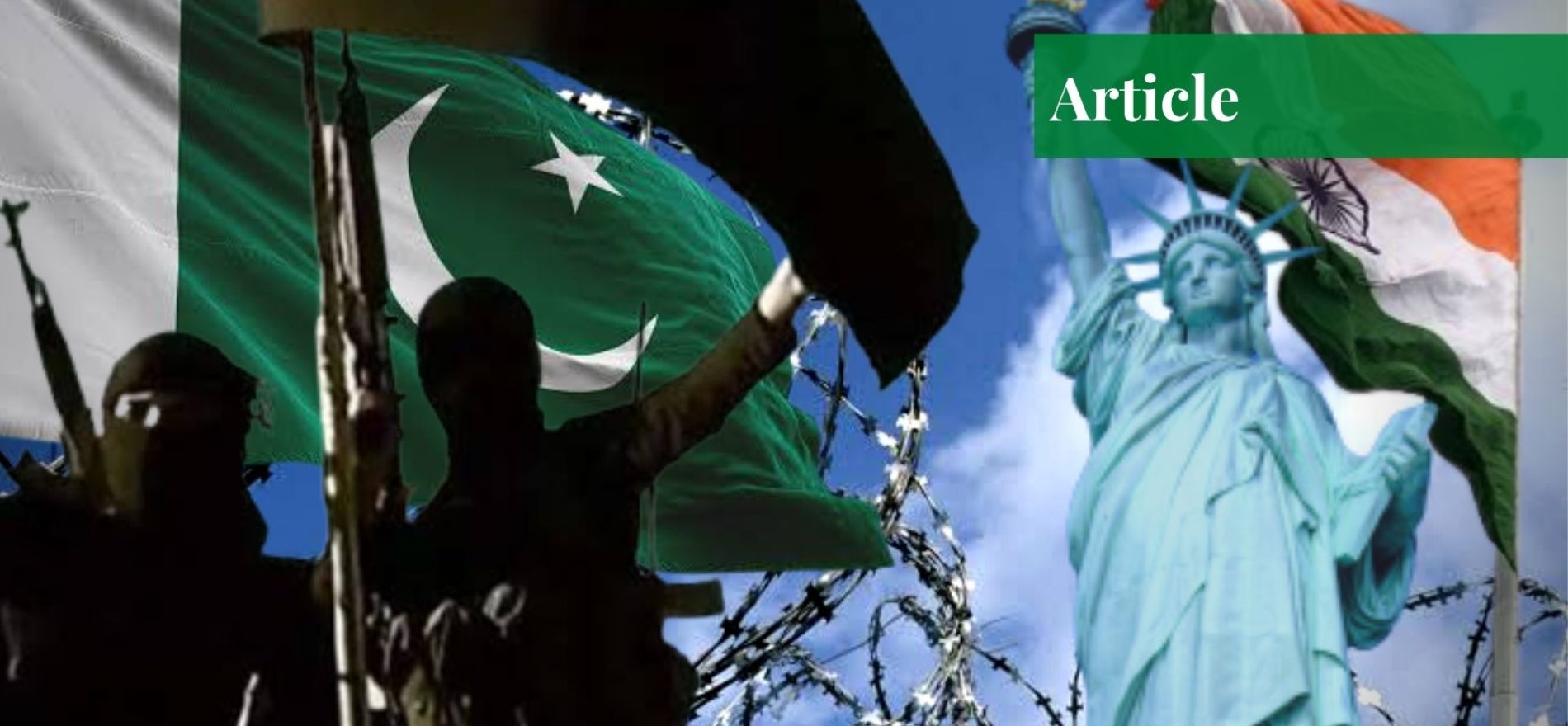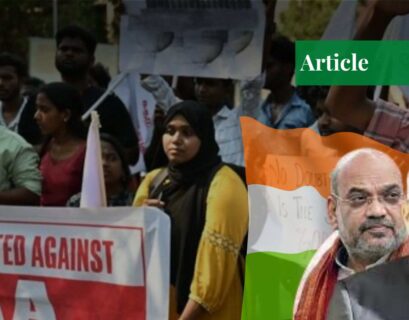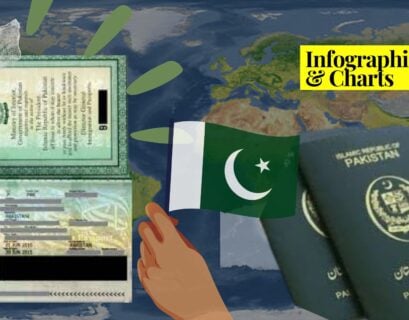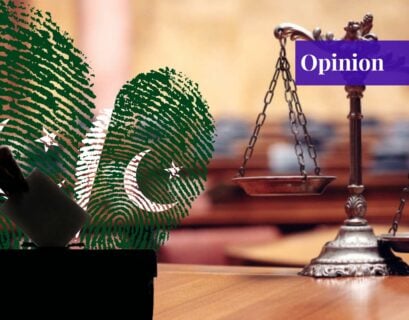Sarmad Ishfaq is an independent researcher and writer whose work has been published by Harvard Kennedy School Review, The Diplomat, Open Democracy, Paradigm Shift, Mondoweiss, and Eurasia Review to name a few. He has also been published by several international peer-reviewed journals such as Taylor and Francis' Social Identities. Before becoming an independent writer, he worked as a research fellow for the Lahore Center for Peace Research. He has a master's degree in International Relations from the University of Wollongong in Dubai where he was recognized as the 'Top Graduate'.
The great poet Allama Iqbal (R.H.) astutely remarked:
Asia is a body of water and clay,
Of which the Afghan nation forms the heart.
The whole of Asia is corrupt,
If the heart is corrupt,
Its decline is the decline of Asia;
Its rise is the rise of Asia,
The body is free only as long as the heart is free
Instability in Afghanistan
Although the decline of the pandemic was looked on fondly by a recovering world, this optimism was unfortunately misplaced. From the Russian incursion of Ukraine to the political crisis in Pakistan; from the surging Islamophobia in Europe and India to the political turmoil in Sri Lanka; from the civil war and humanitarian crisis in Ethiopia to renewed terrorism attacks by ISKP in post-US Afghanistan, there is not much to celebrate.
A hackneyed statement at this point but Pakistan and Afghanistan have been facing a renewed set of internal and external dilemmas these past few months. Afghanistan’s Taliban government, still unrecognized by any nation, is not only facing financial issues but also a huge humanitarian crisis.
According to Human Rights Watch, acute malnutrition is rising throughout the country, and “95% of households have been experiencing insufficient food consumption and food insecurity.” The International Rescue Committee asserts that if unchecked the current crisis could “lead to more deaths than twenty years of war.”
Besides this, the recent string of terrorist incidents has signaled the ill-fated and presaged rise of the ISKP in Afghanistan. Recent attacks by ISKP include the one in Mazar-e-Sharif in a Shia mosque as well as a blast in Kunduz city, which amounted to 4 dead. ISKP and its affiliates have a hatred for Shia Muslims, and it is speculated that the group also conducted two blasts outside a school in a Shia neighborhood which killed at least 6 people.
The Taliban might have downplayed the threat of ISKP, especially after the power vacuum left by the US as, since September 2021, ISKP attacks ramped up. According to Abdul Sayed, a Sweden-based security specialist on radical militant groups in Afghanistan and Pakistan, in 2020, ISKP launched 84 attacks in Afghanistan, compared to 304 in the first 11 months of 2021.
ISKP has successfully killed several senior Taliban officials including the commander of their special forces as well as their head of security. The group has augmented its recruiting by focusing on former Afghan intelligence and military officials – akin to what it did in Iraq. US CENTCOM chief, General Kenneth McKenzie, has noted that ISKP is recruiting and that there will be a tough target for the Taliban.
Although bomb attacks significantly dropped since the Taliban takeover, A UN report says attacks have killed 400 civilians since the Taliban takeover last year – ISKP is blamed for 80% of the bombings. The harrowing detail is that all this signals an increase in the terror footprint of ISIS in the region.
This is not only perilous for Afghanistan but for neighboring Pakistan as well as whenever instability emerges in the former, the latter suffers alongside it. Terrorist attacks permeate the Pak-Afghan border and neither country can stay reticent about such an influx.
Pakistan‘s Internal Situation
As Afghans are dying of ISKP attacks, Pakistani soldiers are being martyred in North Waziristan from the fire across the Afghan side of the border – mainly by the Tehreek-e-Taliban Pakistan (TTP). In the past few months, several of these incidents have soured relations between both nations.
Most recently, three Pakistani soldiers were martyred from cross-border firing. Earlier on April 14, an ambush on a military convoy led to the martyrdom of seven soldiers and in a second incident, one soldier was martyred in the Isham area of North Waziristan. Since December, attacks have surged due to the Taliban-brokered ceasefire between Islamabad and the Pakistani Taliban (TTP) failing.
Therefore, from December until now, there have been consistent attacks on Pakistani soldiers. Pakistan’s ISPR stated, “Pakistan strongly condemns the use of Afghan soil by terrorists for activities against Pakistan and expects that [the] Afghan government will not allow the conduct of such activities in [the] future”.
Due to this surge in terrorist activities, there are unconfirmed reports that Pakistan conducted an air raid in Khost and Kunar provinces – Afghans protested that civilians had been killed while contrasting reports stated that only TTP members died. Regardless, anti-Pakistan protests erupted in the provinces and Taliban spokesperson, Zabihullah Mujahid, warned Pakistan “not to test the patience of Afghans on such issues and not repeat the same mistake again otherwise it will have bad consequences.”
Pakistan has refused so far to comment on the Afghan air raid allegations. Pakistan’s Foreign Office did however state that “terrorists are using Afghan soil with impunity to carry out activities inside Pakistan.” The romance between Pakistan and the Taliban, which was blossoming due to the US exodus, has dwindled and Pakistan’s hope of the Taliban being able to control its side of the border appears to be a pipedream at best currently.
The most recent attack in Pakistan was on Chinese tutors in Karachi on the 26th of April 2022. A female suicide bomber employed by the Balochistan Liberation Army (BLA) detonated herself, killing four including 3 Chinese nationals which has hampered the historically strong bilateral relations between both nations.
Internally, Pakistan is also facing a massive political crisis after Imran Khan’s ouster. This is owed to the fact that Imran Khan and his myriad of supporters believe he was removed due to a US plot enabled by local elites and politicians (see letter gate scandal). The Pakistan Democratic Movement (PDM) – an assortment of the old guard of Pakistani politics, infamous for corruption charges on them – is running Pakistan’s federal government at the expense of Mr. Khan.
The people have reacted vehemently against this outcome and are out in droves rallying behind the former Pakistani prime minister, Imran Khan, in various cities in Pakistan and abroad. Imran Khan has called for a long march towards Islamabad against the PDM, which might become a dharna (sit-in) until early elections are called.
The hashtag Imported_Government_Unacceptable (in Urdu) has become one of the world’s largest tweets with over 126 million tweets according to Tweet Binder and Imran Khan’s recent Twitter Space session also broke the world record for most users. Therefore, Imran Khan’s narrative of the PDM coming into power through a US-backed regime change, heavy horse-trading, as well as institutional favoritism is selling amongst the masses.
Since the PDM has taken over, the already frail economy has dipped more so. The stock market is plummeting (falling thousands of points), the US dollar is rising against the Pakistani rupee, and inflation is steadily growing.
Who Benefits From Instability in Pakistan?
Although there is a myriad of evidence pointing towards US and Indian collusion in instability in Pakistan, I will not go into detail. Those interested in such connivances can simply research the Khulbashan Yadhav (Indian spy) case, EU DisinfoLab’s exposé titled “Indian Chronicles”, evidence of RAW and CIA using Afghan soil to harm Pakistan, BLA’s plea to India for support, and so on.
Regardless of if one believes or disbelieves in US-Indian machinations in the region, there is no doubt that these two countries benefit the most from distrust between Pakistan and Afghanistan as well as instability in both. Since 9/11 Afghanistan has been used to create instability in Pakistan and subsequently counter Chinese aspirations in the region.
Both India and America want to undercut China’s regional hegemony so much so that American security and political commitments with India are directly motivated to counter the Chinese ascension. SIno-Indian relations have been frosty especially since their renewed border disputes while the America and China relations are subdued with mistrust and hate.
Conversely, Pakistan-Indian hatred, stemming from the Kashmir issue, is not going to alleviate anytime soon and Pakistan’s dysfunctional and erratic relations with the US are nothing to write home about. As for Pakistan and China, both enjoy great diplomatic relations and can be termed as each other’s “all-weather friend”. All this alludes to the stark dichotomy in the region marked by a China-Pakistan and America-India bloc.
With regard to China’s growth, the Belt and Road Initiative (BRI) is seen as a massive threat by both India and America. The BRI is a global infrastructure development project that aims to promote economic development as well as inter-regional interconnectivity. The BRI’s star project is the China-Pakistan Economic Corridor (CPEC) of which the development of Gwadar port in Pakistan’s Balochistan province is pre-eminent.
It is unsurprising then to know that the security situation in Balochistan is not ideal. The success of the CPEC and BRI, therefore, hinges upon Pakistan’s stability. BRI/CPEC’s success would mean the dawn of the Chinese age and would usher in a new superpower in the world – such a reality is intolerable to India and America.
A weak, or at least weaker, China suits both Indian and American ambitions in the region and therefore America and the G7 countries have incepted their own megaproject called the Build Back Better World (B3W) which aims to narrow the $40+ trillion infrastructure need in the developing world. The B3W and its state goals are obviously a euphemism for “undermining the BRI”.
The second reason why the US and India benefit most from an unstable Afghanistan and Pakistan is the latter’s nuclear arsenal. Ruining Pakistan’s security, undercutting its economy, and driving a wedge between Pakistan’s populace and its armed forces are cited as the pre-requisites for the endgame of disposing of/selling Pakistan’s nuclear weapons.
This goal is not just linked with America and India but also with Israel as well as Pakistan is the only Muslim nation with nuclear weapons. Israel and America have ceaselessly endeavored to keep Iran’s hands off nuclear weapons and with Pakistan, the aim is said to be in removing such capabilities – especially since Pakistan’s nuclear-capable Shaheen III can reach Israel.
Daniel S. Markey’s 2013 book, “No Exit From Pakistan”, is being touted in the country these days in which he observes that Pakistan’s nuclear arsenal, growing population, and relations with China and India will always force America to be involved with the Muslim country. The IMF’s role also cannot be understated here.
Many Pakistanis, especially in the defense sector, believe that the IMF, an economic hitman, is being used to introduce economic pitfalls that will force the country to sell its nuclear weapons. A nuclear-less Pakistan, stricken by instability, not only serves American/Israeli interests but will also heavily shift the military power balance in India’s favor.
Conclusion
Without pointing any fingers, it would be unsurprising to me if more attacks and more economic instability, God forbid, takes place in Afghanistan and Pakistan – this would worsen the already precarious climate in the region. Pakistan and Iran are one of the few countries that have barely survived a decades-long West-led destabilization campaign by some miracle with others such as Iraq, Syria, Yemen, Libya, Lebanon, and Afghanistan not being so lucky – therefore we must be vigilant.
I am forever an optimist however and by the grace of God believe that Pakistan will miraculously come out of this current do-or-die situation much stronger via the hands of Imran Khan. This however does not mean that we should be ignorant of what, and more importantly, why things are transpiring the way they are currently. As my late father would say, anyone, can tell you “what” is going on in the world, instead ask yourself “why” is it happening.
If you want to submit your articles, research papers, and book reviews, please check the Submissions page.
The views and opinions expressed in this article/paper are the author’s own and do not necessarily reflect the editorial position of Paradigm Shift.



















